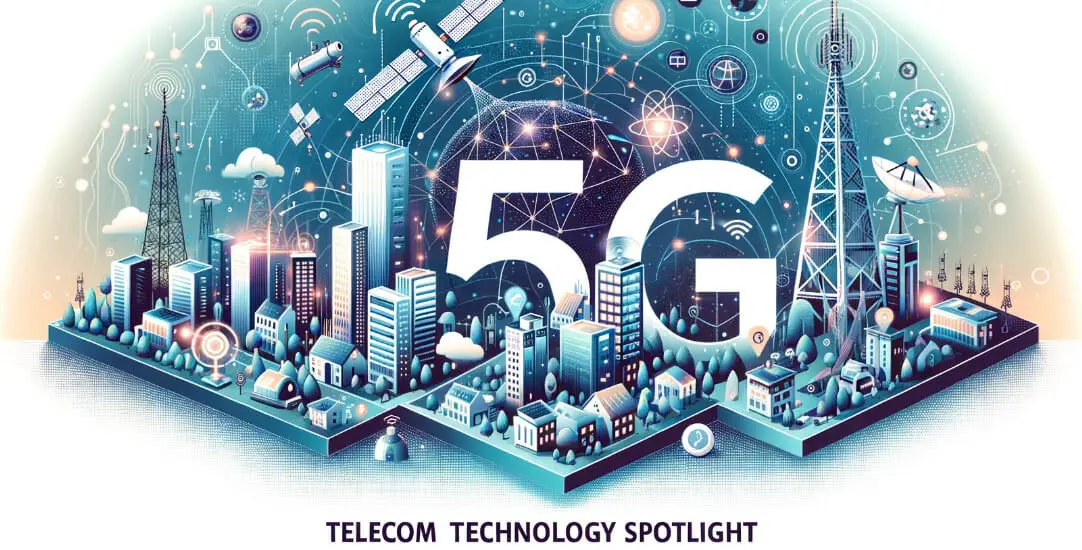Today, we’re spotlighting the game-changing innovations shaping our communication landscape as we know it. It’s an exciting time, and I can’t wait to share these discoveries with you!
Quick Summary: The Key Technological Innovations Shaping the Telecom Sector Ranked from Most Impactful to Least:
| # | Innovation | Detailed Description |
| 1 | ???? 5G Technology | 5G provides unparalleled data speeds, ultra-reliable low latency, and massive device connectivity for diverse applications. |
| 2 | ????️ Edge Computing | Edge computing processes data at or near its source, reducing latency and bandwidth use. |
| 3 | ???? Integrated Access and Backhaul (IAB) | IAB wirelessly interconnects 5G base stations, reducing the need for physical backhaul connections. |
| 4 | ???? Internet of Things (IoT) | IoT connects everyday devices to the internet, enabling remote monitoring, control, and data collection. |
| 5 | ???? Artificial Intelligence (AI) and Machine Learning (ML) | AI and ML empower systems to make decisions, learn from data, and predict outcomes without explicit human intervention. |
| 6 | ☁️ Cloud Adoption | Cloud computing offers on-demand IT resources over the Internet, enabling scalable and flexible digital infrastructure. |
| 7 | ???? Network Slicing | Network slicing segments a single physical network into multiple virtual networks tailored for specific services or devices. |
| 8 | ???? Open Radio Access Networks (Open RAN) | Open RAN decouples hardware from software in telecom networks, fostering innovation and vendor diversity. |
| 9 | ???? Beamforming and Massive MIMO | These techniques enhance wireless signal focus and capacity by using multiple antennas for transmission and reception. |
| 10 | ????️ Cybersecurity and Resilience | Cybersecurity safeguards digital systems, ensuring data integrity and protection from malicious attacks. |
| 11 | ???? Tactile Internet | Tactile internet provides real-time haptic feedback in online interactions, simulating physical touch sensations. |
There’s so much to cover, from 5G networks to IoT applications! Telecom tech is evolving at breakneck speed, pushing boundaries every single day. I’ll be breaking down some of the most influential advancements in this space, making complex ideas simple and accessible for everyone.
Key Technological Innovations
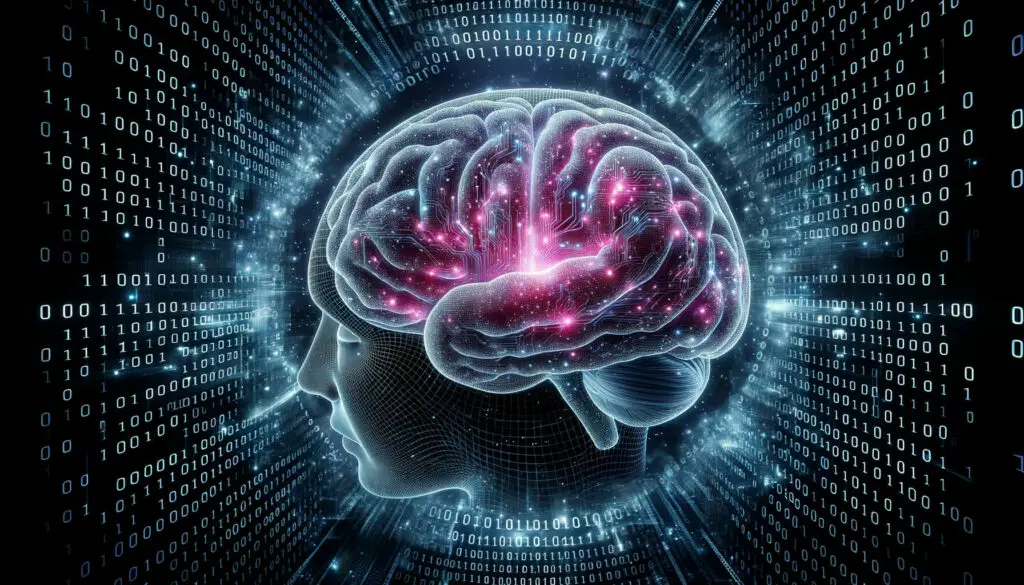
As an industry, telecom has never been one to rest on its laurels. With an eye always on the horizon, it’s constantly pushing boundaries and reimagining what’s possible. Here are some of the most exciting recent innovations in the field.
5G Technology
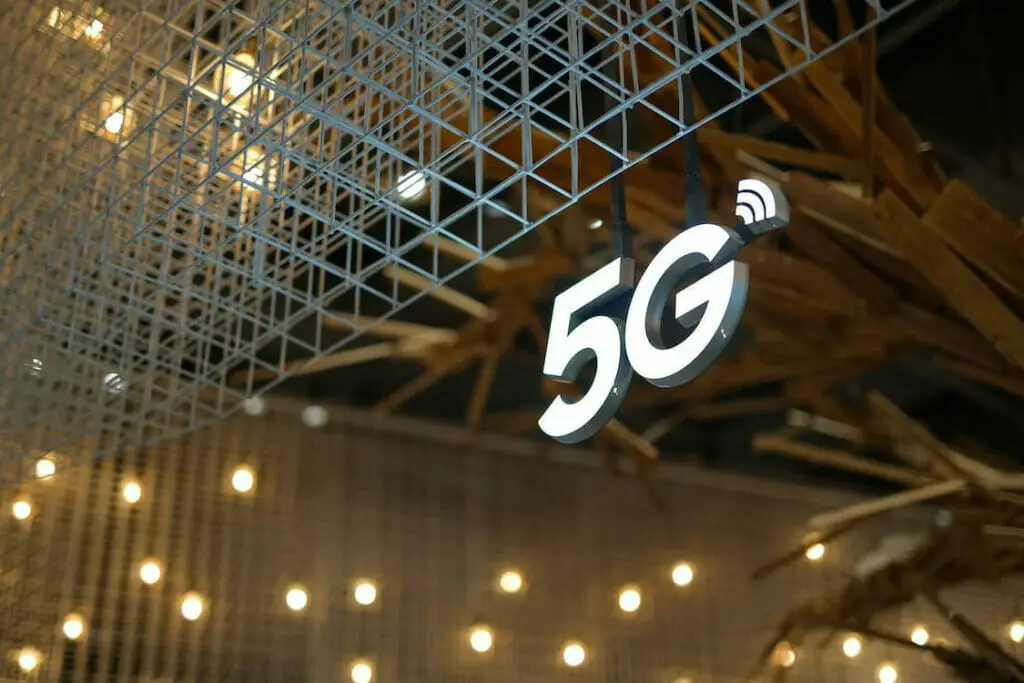
It’s the newest generation in mobile technology, and it’s not just about faster phones. It’s about a fully connected environment. This will be the backbone for many of our future technologies.
Functionality
- Redefining Wireless Communication: 5G is shifting the paradigm. With improved infrastructure, we’re looking at more reliable and swift connections.
- Real-time communication: This allows users to send and receive data immediately. Imagine sending a large file and having it delivered in milliseconds.
- Super-speedy transfers: When we say fast, we mean it. Download or upload large files or stream high-definition content without any hitches.
Benefits
- Pioneering New Apps: With the introduction of 5G, we can expect groundbreaking applications that utilize its speed and reliability.
- Cars Chatting: With 5G, vehicles can communicate with each other, enhancing road safety and reducing traffic congestion.
- Next-Level Gaming: Gamers can anticipate seamless experiences without the frustrations of lag or dropped connections.
- Virtual Meetings: Remote meetings will have better clarity in video and audio, making them almost as good as face-to-face interactions.
- Everyday Augmented Reality: With faster data speeds, augmented reality will become more integrated into our daily tasks, offering assistance and enhancing experiences.
Impact
- Changing the Industry Landscape: Industries across the board, from healthcare to entertainment, will see transformations thanks to 5G.
- Remote Health Procedures: Medical professionals can perform certain procedures or consultations from a distance with the reliability of 5G.
- Engaging VR & AR: Virtual and augmented reality platforms will be more immersive, making them even more engaging for users.
Effect on Telecom
- A Fresh Blueprint: The telecom industry will transform significantly to accommodate the 5G revolution.
- Infrastructure Revamp: Telecom companies must upgrade their equipment and facilities to support 5G capabilities.
- Strategies and Gear: New strategies will emerge to optimize the 5G network and its potential applications.
- New Revenue Streams: As more devices become interconnected, telecom companies will find new revenue-generating avenues.
Current Innovations & Projects
- 5G Going Global: Major telecom companies are racing to deploy 5G networks worldwide.
- Tech Team-Ups: Various technology firms are collaborating to develop applications that leverage 5G’s capabilities.
- Futuristic Cities: With 5G, cities will become more interconnected, optimizing traffic systems, utilities, and other services.
Edge Computing
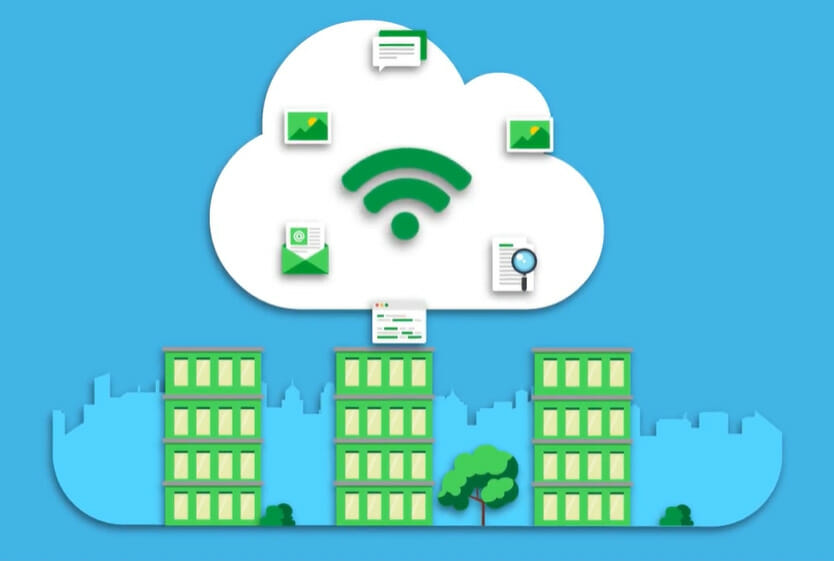
Picture a situation where, instead of waiting for a quarterback’s instructions from the sidelines, every player has the strategy and decision-making ability right then and there. Edge computing is that playmaker, ensuring every device gets the data and processing it needs on the spot.
Functionality
- Localized Data Processing: Imagine you’re using a navigation app. With edge computing, the nearest cell tower or your device takes on that responsibility instead of reaching out to a distant data center to fetch and process data. The result? Quicker map updates, real-time traffic alerts, and smoother navigation.
Benefits
- Immediate Reactions: Whether a self-driving car is making a critical maneuver or a security camera identifies a potential threat, the nearly real-time responses are a game-changer.
- Efficient Networking: Less data traveling back and forth means networks aren’t clogged up with unnecessary traffic. Think of it as optimizing the lanes on a highway to ensure the smoothest flow.
Impact
- Empowering IoT: We’re talking about every smart device, from your fridge suggesting recipes based on its contents to wearable health monitors that can predict potential issues before they become serious.
Effect on Telecom
- Infrastructure Evolution: Telecom companies are optimizing their infrastructures to support edge computing. Instead of a few centralized data centers, we’re seeing the rise of micro-data centers closer to users.
- New Revenue Streams: Telecom operators can now offer advanced services, like localized cloud services or analytics, opening up new business opportunities.
Current Innovations & Projects
- Smart Cities: Urban areas are becoming smarter by integrating edge computing from traffic management systems that adapt in real-time to public safety applications that can react instantaneously to emergencies.
- Healthcare: Imagine remote surgeries where latency is a matter of life and death. With edge computing, medical devices can relay real-time data, making telemedicine more efficient and safer.
- Manufacturing & Automation: Factories integrate edge computing to monitor equipment health, predict maintenance needs, and ensure optimal production without delays.
Integrated Access and Backhaul (IAB)
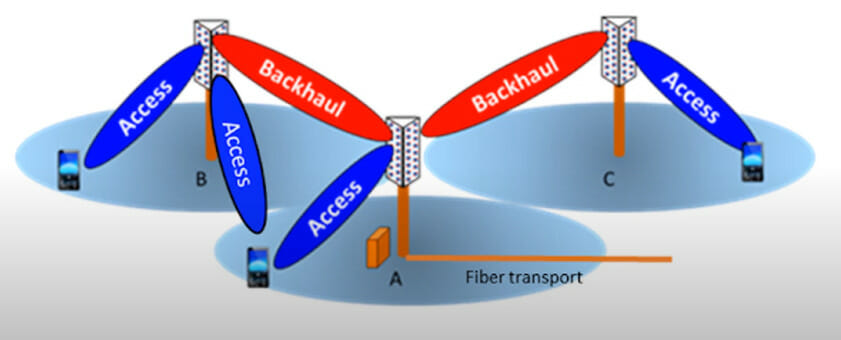
This technology is like creating bridges in areas where laying roads is challenging. It wirelessly extends the 5G network.
Functionality
- Wireless Expansion: IAB is designed to transmit data between primary 5G base stations and locations where direct connections might be difficult due to geographical or infrastructural barriers.
Benefits
- Infrastructure Savings: Establishing comprehensive fiber-optic networks can be expensive and require substantial time. IAB offers an alternative, significantly reducing both costs and deployment durations.
Impact
- 5G Accessibility: IAB allows even geographically challenging or remote locations to access 5G networks.
Effect on Telecom
- Optimized Deployments: Telecom companies, instead of making massive investments in tough terrains, can now use IAB. This means more extensive coverage with fewer resources.
- Operational Efficiency: Reduced manual interventions, accelerated deployment periods, and less physical infrastructure provide an efficient operational model for telecom entities eager to expand their 5G network.
Current Innovations & Projects
- Rural Connectivity Initiatives: Ongoing projects ensure that 5G reaches rural areas. The use of IAB in these projects means that regions previously considered too difficult or expensive to reach are now getting connected.
- Urban Coverage: Even within densely populated cities with many obstructions, IAB is being used to ensure uninterrupted 5G coverage without the need for extensive physical infrastructure.
- Transportation Connectivity: There are initiatives to ensure constant 5G connectivity for modes of transportation, such as buses and trains, as they move through diverse terrains. IAB installations along these routes ensure this consistent connectivity.
Internet of Things (IoT)
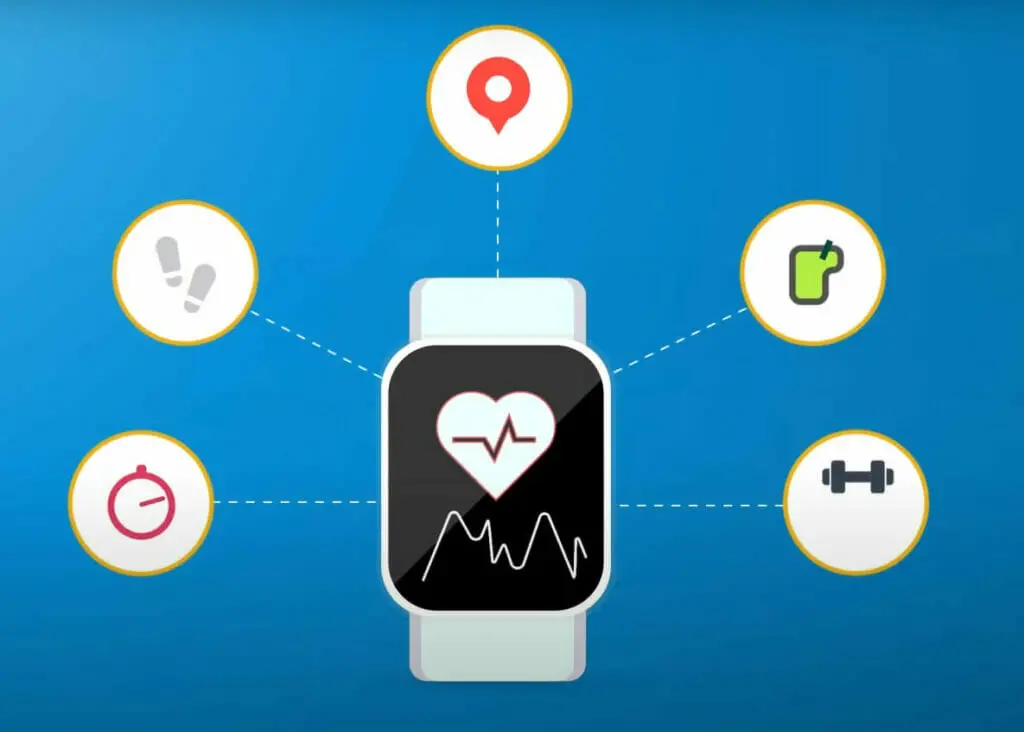
The Internet of Things (IoT) describes a system where everyday objects are connected to the internet or each other. These objects, embedded with sensors, software, and other technologies, can collect and exchange data.
Functionality
- Connectivity and Communication: Devices and objects can transmit and receive data, enabling them to gather information from their surroundings and respond to remote commands.
Benefits
- Automation & Efficiency: Devices synchronize their operations to improve user convenience. For instance, a thermostat can adjust room temperature based on a user’s preferences, or a car can signal home devices when it’s nearing home.
- Data-Driven Insights: With many devices connected and sharing data, there’s an opportunity to gather and analyze vast amounts of information. This data can be used to improve system operations, predict user needs, and optimize processes.
Impact
- Transformed Daily Living: IoT touches multiple aspects of life and industries. Whether it’s managing traffic in cities, aiding agricultural practices, or enhancing the retail experience, IoT plays a crucial role.
Effect on Telecom
- Increased Data Traffic: More IoT devices transfer data, requiring robust telecom infrastructures.
- Specialized Service Offerings: Telecom providers might offer specific plans or services tailored for optimal IoT operations.
- Advancements in Network: With the growing demand for quick data transfer and real-time responses, networks will need to adapt, potentially pushing advancements beyond the current capabilities of 5G.
Current Innovations & Projects
- Smart Cities: Cities worldwide are utilizing IoT to enhance public services. This includes real-time traffic monitoring, improving waste management processes, and optimizing public transportation routes.
- Agriculture: IoT devices help farmers by monitoring soil health, predicting weather changes, and tracking crop growth. This real-time data aids in making timely decisions.
- Healthcare: Wearable devices monitoring health metrics can be connected to medical systems, providing healthcare professionals with real-time patient health data.
Mixed Reality – AR and VR Convergence
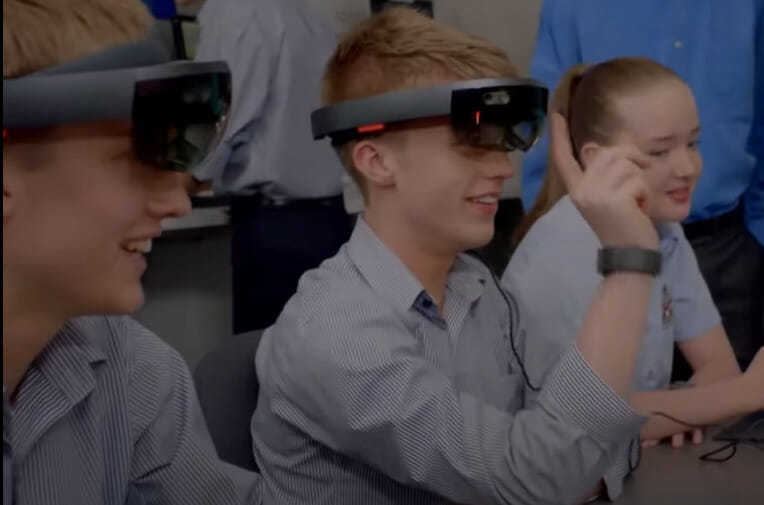
Mixed reality (MR) is a technology that combines elements of both Augmented Reality (AR) and Virtual Reality (VR). It seamlessly blends the physical and digital worlds, allowing users to interact with and manipulate physical and digital items and environments using next-generation sensing and imaging technologies.
Functionality
- Hybrid Experience: MR doesn’t just present digital information or create a wholly digital world. Instead, it integrates and anchors digital content into the user’s environment, allowing interaction across realities.
Benefits
- Enhanced Training: Medical students, pilots, and many other professionals can train in an environment that simulates real-world scenarios. This provides invaluable hands-on experience without real-world risks.
- Revolutionized Entertainment: The boundaries of gaming and cinematic experiences expand as users can engage with their surroundings like never before. Movies aren’t just watched; they’re experienced. Games are no longer confined to screens but span the user’s environment.
Impact
- Industry-Wide Transformation: It’s not just entertainment and training; mixed reality revolutionizes industries. Architects can walk clients through structures not yet built, and museums can transport visitors to ancient civilizations with historical re-enactments in MR.
Effect on Telecom
- Data Demands: MR applications are data-heavy. Seamless experiences will require faster data transfer speeds, driving telecoms to improve infrastructure.
- Low Latency: Real-time interactions in MR necessitate ultra-low latency. Telecom networks must ensure rapid data processing and transmission to support MR applications without lag.
- Cloud Integration: Many MR applications will rely on cloud infrastructures for data storage and processing. This integration poses both a challenge and an opportunity for telecom operators.
Current Innovations & Projects
- Educational Institutions: Schools and universities are beginning to use MR to create interactive learning environments where students can virtually explore everything from historical sites to molecular structures.
- Real Estate: Property tours have been elevated with MR. Potential buyers can visualize changes to a property in real-time, such as wall colors or furniture placements.
- Healthcare: Surgeons are using MR for real-time overlays during surgeries. This aids in precision and can provide vital data during the procedure.
Artificial Intelligence (AI) and Machine Learning (ML)
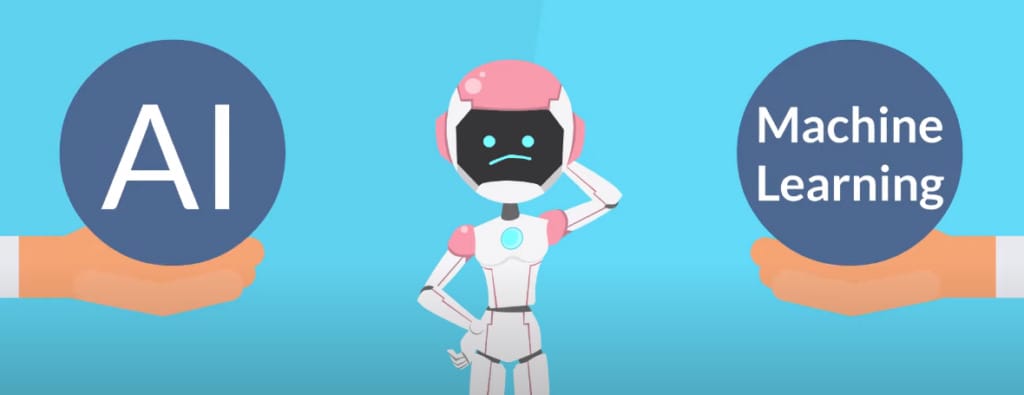
AI and ML are technologies that empower machines to simulate human intelligence processes. AI provides the broader capability for machines to perform tasks that typically require human intelligence. At the same time, ML is a subset of AI where algorithms learn from data and improve over time.
Functionality
- Data-Driven Decisions: These aren’t your average systems. They’re continuously evolving, learning from new data, making connections, and refining their processes. Instead of a rigid set of commands, they adjust based on the information they process.
Benefits
- Proactive Problem Solving: Rather than reactively addressing issues, AI and ML enable proactive measures. It’s like having a crystal ball that can predict machinery faults, ensuring timely maintenance and reducing unplanned downtime.
- Customized User Experiences: The beauty of AI and ML is in its adaptability. Everyone is unique, and these systems ensure that experiences, whether movie recommendations or online shopping suggestions are tailored to individual tastes and preferences.
Impact
- Efficiency & Growth: Businesses aren’t just automating tasks but making them smarter. Reduced costs, better resource allocation, and enhanced services are just the tip of the iceberg. With AI and ML, businesses have tools to understand their operations and customers like never before.
Effect on Telecom
- Network Optimization: Telecom industries leverage AI and ML for network optimization. It helps predict network congestion, automate traffic distribution, and improve user connectivity.
- Customer Service: Many telecom companies employ AI-powered chatbots for customer service, ensuring swift responses and round-the-clock support.
- Fraud Detection: With the massive data flow, telecom industries are potential targets for fraud. AI can monitor transactions and detect anomalies, safeguarding the company and its users.
Current Innovations & Projects
- Healthcare Predictions: AI analyzes medical data to predict potential health risks, allowing timely interventions.
- Retail: Businesses use ML to understand buying habits, predict stock needs, and adjust pricing dynamically based on demand.
- Transportation: AI-driven predictive maintenance is implemented in transportation networks, from railways to airlines, ensuring safer and more efficient travel.
Cloud Adoption
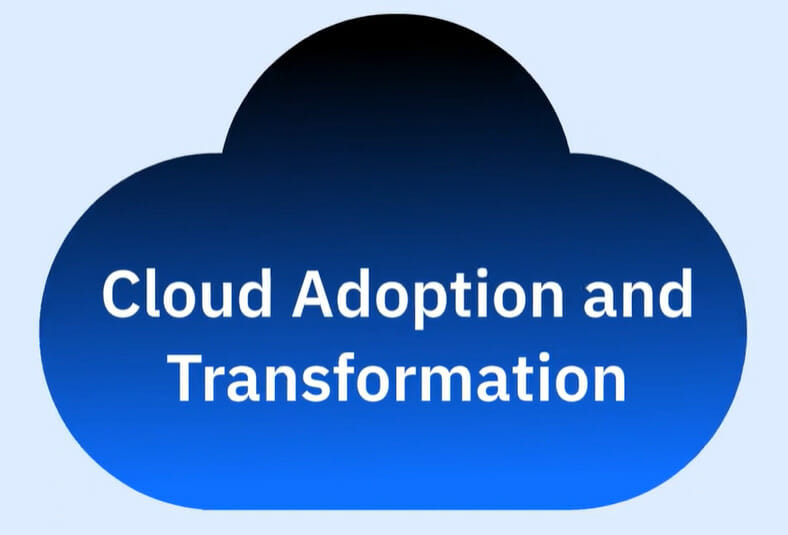
Think of cloud computing as the expansive, dynamic virtual playground for data. It’s where businesses, big and small, move beyond the limitations of physical hardware and enter an arena of boundless digital possibilities.
Functionality
- Scalable Resources: Just like you’d adjust the size of a workspace based on your team’s needs, cloud platforms let you dial up or down your computing resources. It’s about getting what you need when needed, ensuring efficiency, and avoiding wastage.
Benefits
- Work From Anywhere: The world’s your office! Cloud computing decouples work from a location. So your data is right there whether you’re in a bustling city cafe or on a beach halfway across the world.
- Cost Efficiency: Building and maintaining physical servers? That’s old school. With the cloud, you’re looking at significant savings. You rent the space you need, so you’re not paying big bucks upfront.
- Data Access: Lost data is a thing of the past. With everything on the cloud, backups are automatic; retrieving data is a breeze. It’s all about ensuring that business doesn’t just go on but thrives.
Impact
- Business Agility: It’s not just about storage; it’s about speed and adaptability. Companies are now agile, able to switch lanes, experiment, and evolve at a previously unimaginable pace.
Effect on Telecom
- Data Traffic Management: With more businesses moving to the cloud, there’s a surge in data traffic. Telecom companies are optimizing their networks to handle this increased load, ensuring smooth access for businesses and individuals.
- New Revenue Streams: Telecom operators are diving into cloud services, offering tailored solutions to businesses and creating new avenues for revenue.
- Enhanced Services: With the integration of cloud systems, telecom companies can roll out services faster and provide better quality of service to their customers.
Current Innovations & Projects
- Hybrid Clouds: The best of both worlds! Companies blend private and public clouds for optimal security, scalability, and cost benefits.
- Serverless Computing: This isn’t about eliminating servers but making infrastructure management and resource allocation seamless for businesses. You focus on your core operations while the cloud takes care of the rest.
- AI and ML Integration: With cloud platforms now integrating AI and ML tools, businesses have powerful analytics and automation tools at their disposal, opening doors to new possibilities and smarter operations.
Network Slicing
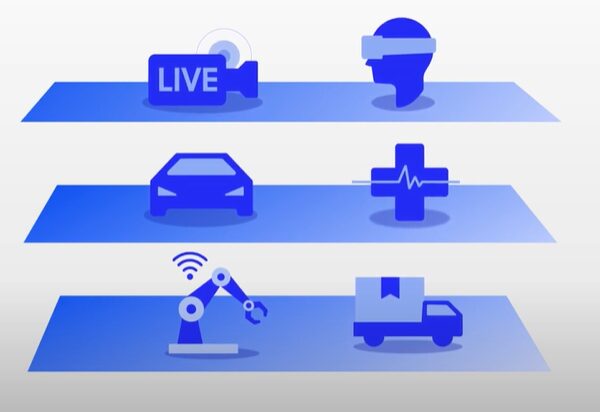
Network slicing is a type of network architecture that allows multiple virtual networks to be created on top of a shared physical infrastructure.
Functionality
- Virtual Partitioning: Network slicing divides a single physical network into multiple separate virtual networks, each tailored for specific applications or user groups.
Benefits
- Customization for Different Use Cases: It enables each virtual network to be individually optimized for specific requirements. This ensures that varying demands, whether from an individual consumer or an entire industry, are met without compromise.
- Efficient Use of Infrastructure: The technology maximizes the physical infrastructure’s usage by efficiently segmenting and allocating resources where they’re most needed.
Impact
- Optimized Service Delivery: Different segments can prioritize their specific needs, like bandwidth or speed, ensuring each slice delivers its services most effectively.
Effect on Telecom
- Infrastructure Utilization: By optimizing resources, telecom operators can maximize their return on infrastructure investments.
- New Revenue Streams: Telecoms can diversify their offerings by introducing specialized services for different slices, thus creating new business opportunities.
- Adaptive Infrastructure: As user demands change, virtual slices can be easily reconfigured, making it a flexible and adaptive solution for telecom operators.
Current Innovations & Projects
- 5G and Network Slicing: The advent of 5G technology has brought the capabilities of network slicing to the forefront, with enhanced speed and versatility, allowing for more detailed and varied slice configurations.
- IoT Integration: As the number of connected devices grows, network slicing ensures they communicate efficiently without overwhelming the system.
- Smart City Projects: Cities globally are utilizing network slicing in their infrastructure to cater to the varied needs of public services, from emergency communications to daily data traffic management.
Open Radio Access Networks (Open RAN)
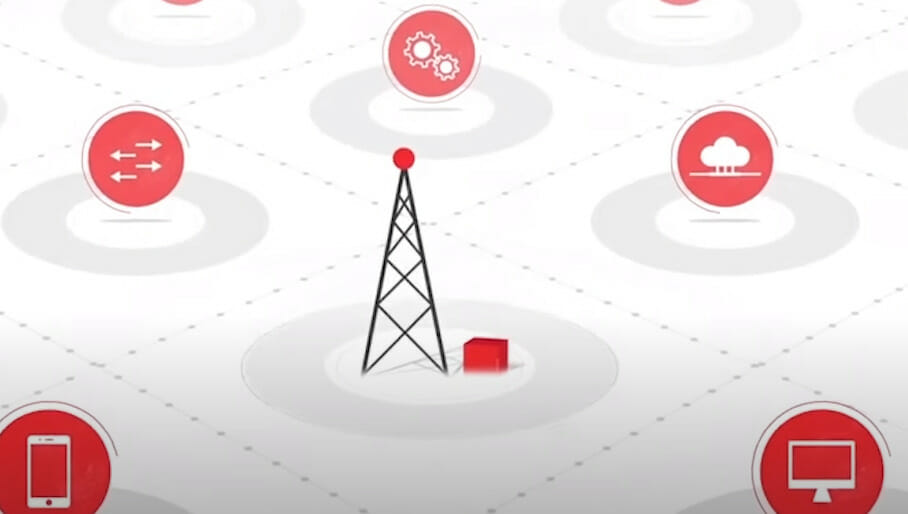
Open RAN stands for Open Radio Access Network. At its core, Open RAN is about decoupling traditional telecom networks’ hardware and software components, allowing greater flexibility and interoperability between various vendors and solutions.
Functionality
- Interoperability: Open RAN ensures that different components, even from multiple vendors, can seamlessly integrate and function together. This move breaks away from the confines of a single supplier system and ushers in a new era of technological choice.
Benefits
- Cost Efficiency: Having multiple vendor options translates to competitive pricing. Companies aren’t stuck with the pricing of one provider but can explore and opt for the most economical and efficient choices.
- Adaptability: With the ability to mix and match components, networks can swiftly integrate the latest tech innovations without revamping the entire system.
Impact
- Revitalized Market: The idea of openness breathes new life into the telecom market. New vendors have opportunities, established players push boundaries to remain relevant, and the end-users reap the benefits.
Effect on Telecom
- Infrastructure Flexibility: Open RAN can change how telecom companies conceptualize and deploy their networks. This flexibility ensures that networks are always at the forefront of technological advancements without the pressure of frequent, expensive overhauls.
- Richer Vendor Ecosystem: Open RAN lays the foundation for more vendors to participate, cultivating a diverse ecosystem. A wider array of players leads to a surge in innovative solutions and competitive pricing.
Current Innovations & Projects
- Enhanced Rural Connectivity: Projects focusing on Open RAN are rising to the challenge of providing robust connectivity in hard-to-reach areas. The ease and affordability of deployment make it a cornerstone for future rural broadband initiatives.
- Integration with 5G: As the momentum for 5G builds globally, Open RAN is poised to play a central role. It ensures the upcoming networks are faster, smarter, adaptable, and resilient.
Beamforming and Massive MIMO
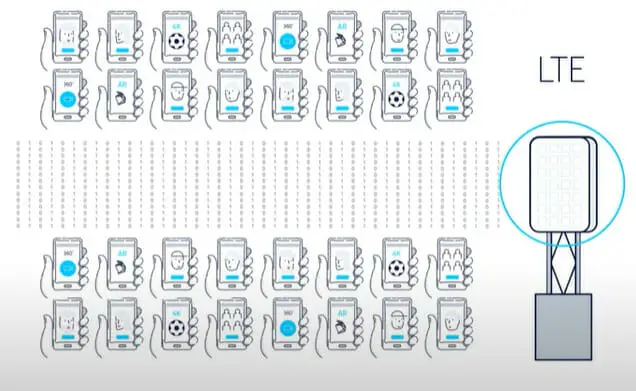
Beamforming and Massive MIMO (Multiple Input, Multiple Output) are advanced signal processing techniques employed in wireless communications. At the same time, Beamforming focuses the wireless signal in a specific direction toward a device. Massive MIMO leverages multiple antennas at the transmitter and receiver to enhance communication.
Functionality
- Precision-Driven Communication: With Beamforming, wireless signals are no longer sprayed in all directions. They’re precision-directed to a targeted device, ensuring clarity and strength.
- Multiple Channels with Massive MIMO: Think of multiple antennas as multiple lanes on a highway. The more lanes you have, the more traffic (or data) you can handle simultaneously, ensuring smooth flow and rapid transfers.
Benefits
- Crystal Clear Connections: The targeted approach of Beamforming significantly reduces interference, ensuring that your call or data connection doesn’t drop when you need it the most.
- Maximized Throughput: With Massive MIMO’s multiple antennas, data transfer rates are significantly boosted. This is like having more checkout counters open in a store, speeding up the processing time for everyone.
Impact
- The Pillars of 5G: For all the talk about 5G’s transformative potential, it would remain talk without technologies like Beamforming and Massive MIMO. They form the backbone, making the promise of ultra-fast, ultra-reliable wireless communication a reality.
Effect on Telecom
- Infrastructure Evolution: As telecom operators roll out their 5G networks, there’s a shift in infrastructure requirements. Traditional antennas are being replaced or supplemented with arrays equipped for Beamforming and Massive MIMO, heralding a new era in wireless communication.
- Enhanced User Experience: For the end-users, these technologies mean consistent signal strength, fewer dropped calls, faster downloads, and a generally smoother wireless experience.
Current Innovations & Projects
- Urban Connectivity: One of the challenges in bustling urban centers is ensuring robust wireless connectivity amidst the concrete jungle of buildings. With Beamforming and Massive MIMO, there are ongoing projects to enhance signal penetration and reduce dead zones in cities.
- Stadiums and Event Venues: Large gatherings, like sporting events or concerts, strain networks immensely. Innovations in Beamforming and Massive MIMO are geared towards handling such high-density scenarios, ensuring that your live updates and uploads don’t get stuck the next time you’re at a big event.
Cybersecurity and Resilience
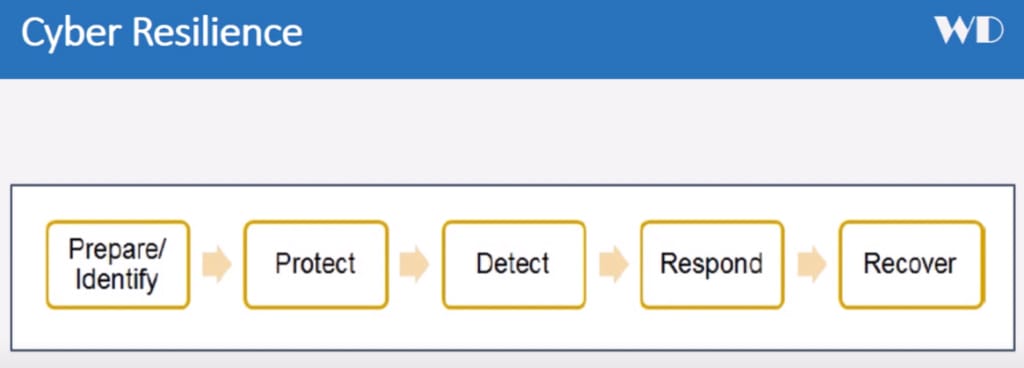
Cybersecurity refers to the practices and solutions to safeguard systems, networks, and data from cyber threats and unauthorized access. Resilience is the ability of these systems to anticipate, withstand, recover from, and adapt to adverse conditions, be it cyber attacks or system failures.
Functionality
- Guarding the Gates: Cybersecurity solutions, from firewalls to encryption tools, are designed as the first defense against malicious activities, ensuring that unauthorized entities can’t breach or compromise valuable data.
- Bouncing Back: Resilience ensures that even if a system faces disruptions, there’s a mechanism for rapid recovery and restoration of normal operations.
Benefits
- Protection of Assets: By warding off cyber threats, businesses can protect their intellectual property, sensitive information, and reputation.
- Smooth Operations: A resilient system means minimum downtime. Despite a cyber incident, operations can quickly resume, ensuring minimum service disruption.
Impact
- Strengthened Trust: Users and clients place immense trust in digital platforms. A robust cybersecurity framework fortifies this trust, reassuring everyone that their data and activities are safe.
Effect on Telecom
- Network Integrity: Telecom networks are critical infrastructures, connecting millions if not billions. Ensuring the cybersecurity and resilience of these networks is vital so users can communicate and access data without fearing unauthorized interceptions or downtime.
- 5G and Security: The attack surface expands as the world moves towards 5G. Telecom companies invest heavily in cybersecurity to ensure these faster networks have fortified defenses.
Current Innovations & Projects
- AI in Cybersecurity: There’s an ongoing push to use Artificial Intelligence for predictive threat analysis. By analyzing vast amounts of data, these AI systems can detect and neutralize threats before they cause harm.
- Decentralized Security: With the rise of edge computing in telecom, there’s a shift towards decentralized security solutions. This means securing not just central data centers but also remote nodes and devices.
- Training & Awareness Programs: Recognizing that human error can be a weak link, many organizations are launching extensive training programs to educate employees about potential cyber threats and best practices.
Immersive Retail

Immersive Retail refers to integrating digital technologies, particularly augmented reality (AR) and virtual reality (VR), into the shopping experience. This approach allows consumers to engage with products in a simulated environment, offering a richer understanding and interaction than traditional online or in-store shopping.
Functionality
- Digital Interactions: Think of browsing an online catalog, but instead of just viewing static images, you’re immersed in a 3D environment. Whether seeing a dress from all angles or placing a virtual sofa in your living room to check the fit, immersive retail brings the product to you.
- Customized Environment: Retailers can craft unique virtual showrooms or settings, allowing customers to experience products in varied contexts, seasons, or even times of day.
Benefits
- Convenience and Clarity: No more guessing if that table will fit your dining room. With AR, you can place it right there and see for yourself. And for those who miss the thrill of in-store shopping, VR offers a chance to stroll through virtual aisles.
- Global Reach: Stores aren’t limited by geography. A customer in Tokyo can virtually visit a boutique in Paris, bridging the global retail gap.
Impact
- Elevating E-commerce: Immersive retail is a game-changer. It addresses the tactile void in online shopping, merging the physical and digital realms and offering customers the best of both worlds.
Effect on Telecom
- Data Demand: These immersive experiences require significant bandwidth. As more retailers adopt this, there’ll be an increased demand for telecom networks, potentially driving advancements in speed and capacity.
- 5G and Edge Computing: The low latency and high speeds promised by 5G will be crucial in delivering seamless AR and VR experiences. Additionally, edge computing, which processes data closer to the user, will ensure smooth and glitch-free experiences.
Current Innovations & Projects
- Virtual Dressing Rooms: Some leading fashion retailers are experimenting with virtual dressing rooms, allowing customers to ‘try on’ clothes from their homes.
- Interactive Product Demos: From cars to gadgets, potential buyers can get a detailed, interactive product tour, manipulating items, opening doors, or zooming into specific features.
- Personalized Store Tours: Imagine entering a virtual store tailored just for you. As you walk in, you’re presented with items based on your preferences and purchase history, making shopping efficient and delightful.
Tactile Internet

The Tactile Internet represents the evolution of the internet from visual and auditory experiences to one that includes haptic feedback, enabling users to experience touch in real-time interactions online. It merges high-speed networks with fast response times, enabling tactile and haptic devices to interact seamlessly across distances.
Functionality
- High-Speed Haptic Feedback: By instantly transferring tactile information, users can feel physical sensations in real time, bridging the gap between the virtual and physical worlds.
- Ultra-Low Latency: To provide genuine touch feedback, the network requires ultra-low latency, ensuring instantaneous responses.
Benefits
- Enhanced Remote Experiences: Whether a doctor can feel through a robotic arm during a remote surgery or an artist collaborating from two different corners, the tactile internet delivers sensations absent in previous internet interactions.
- Education & Training: Imagine learning pottery or sculpting where students can feel the instructor’s actions and corrections, offering a more holistic learning experience.
Impact
- Redefining Remote: Industries and professions relying on touch will no longer be constrained by location. This technology ensures that touch, an essential human sense, is effectively integrated into digital experiences.
Effect on Telecom
- Bandwidth and Latency: There’s a tremendous demand for ultra-reliable and low-latency communication (URLLC) to facilitate the tactile internet. Telecom industries must invest in infrastructure to accommodate these needs, ensuring consistent and lightning-fast connections.
- 5G: Current advancements in 5G technology are crucial for the tactile internet, but looking forward, even greater speeds and responsiveness will be necessary, pushing the boundaries of what’s possible in telecom.
Current Innovations & Projects
- Telemedicine: With the tactile internet, medical professionals see patients or procedures and feel them. This offers more detailed remote diagnostics and treatment opportunities.
- Virtual Reality (VR) & Augmented Reality (AR): The next frontier in VR and AR is not just about seeing or hearing; it’s about touching. Integration of the tactile internet could lead to fully immersive experiences where users can feel virtual objects.
- Remote Robotics: In industries like manufacturing or space exploration, operators can control robots from afar, receiving tactile feedback and making intricate tasks feasible.
Telecom Technology Spotlight: Opportunities Ahead
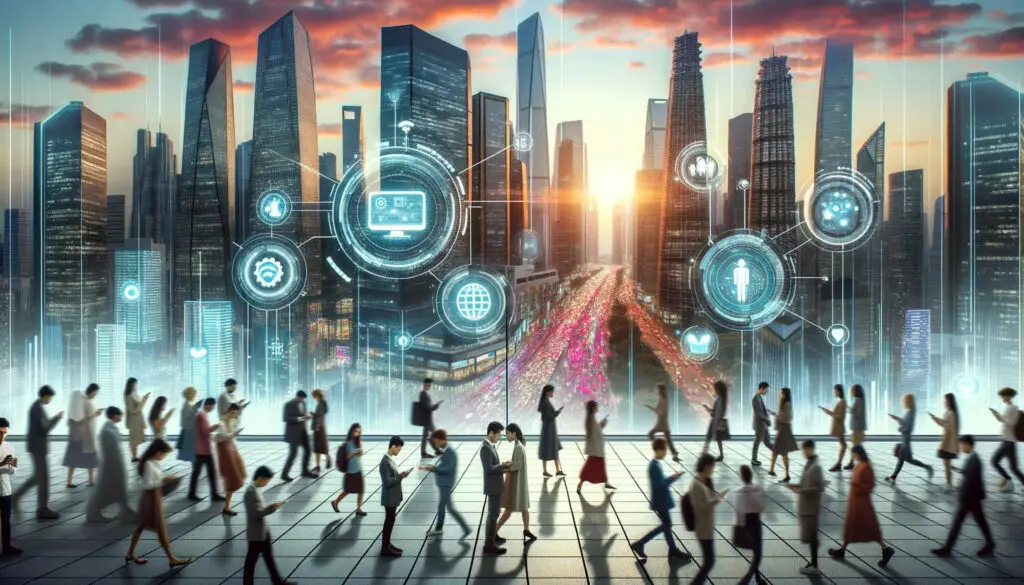
The advancements in the telecom sector open doors to many opportunities, reshaping the way we interact with technology and our environment:
- Seamless Connectivity: 5G and Edge Computing development guarantees faster data transfer and minimal latency. This ensures high-quality video streaming and efficient real-time gaming experiences.
- Smart Cities: Integrating IoT, AI, and modern telecom networks facilitates the development of adaptive traffic management, efficient waste management systems, and responsive public transport systems.
- Telemedicine Advancement: The introduction of Tactile Internet combined with high-speed connections can enable doctors to provide medical services, including surgeries, from remote locations. This is especially valuable for regions with limited access to specialized medical care.
- Green Telecom: The emphasis on energy-efficient networks signifies a move towards environmentally friendly solutions in the telecom sector.
- Personalized User Experience: AI and Machine Learning offers services tailored to individual preferences. This personalization extends to content recommendations, shopping suggestions, and educational courses.
- Decentralized Networks: Incorporating Blockchain in telecom can transform data storage and sharing, leading to more secure, transparent, and user-driven systems.
- Education Transformation: Enhanced telecom infrastructures can enable immersive online education experiences. This includes comprehensive virtual reality sessions, interactive online classes, and collaborations between students worldwide.
Telecom Technology Spotlight: The Challenges
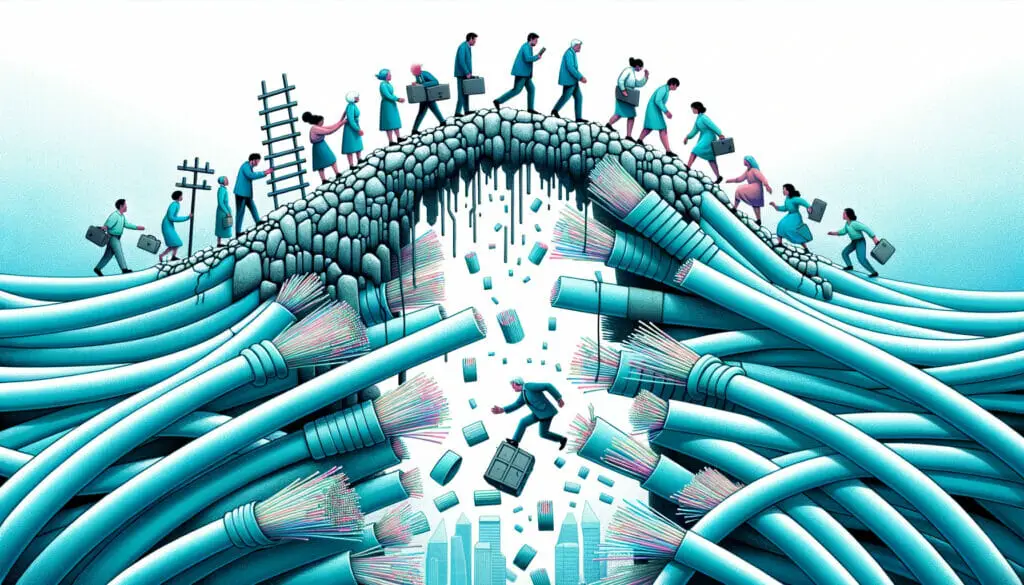
In the dynamic world of Telecom Technology, advancements come with their own set of challenges. As we navigate the intricate path of innovation, we must recognize and understand these hurdles to ensure a seamless digital future. Let’s delve deeper into the complexities that shape this industry.
- Infrastructure Upgrades: Here’s the deal: New tech often means new gear needs. Upgrading infrastructure to keep up with the latest technology demands is like giving an old house a full-on renovation. It takes time, money, and a lot of effort!
- Interference Issues: Imagine trying to chat at a loud party. It’s hard. In the telecom world, interference can cause data loss and degrade the quality of service. Ensuring clear channels in our wireless networks is challenging, especially with so many devices joining the party!
- Security Concerns: In a world where we share more online than ever, keeping our data safe is crucial. With new tech comes new vulnerabilities, so it’s a race to stay one step ahead of the cyber baddies.
- Remote Connectivity: While we’re making huge strides, there are still remote places where connectivity is like finding a needle in a haystack. Ensuring everyone, everywhere, has access? That’s a challenge we’re still working on.
- Integration with Legacy Systems: Blending the old with the new isn’t just about style; it’s a genuine telecom challenge. It is like trying to fit a brand-new engine into a classic car. It might be possible, but it requires some fine-tuning!
- Rising Consumer Expectations: With all the tech advancements, expectations are skyrocketing. Everyone wants faster, clearer, and more reliable services. Meeting these high demands? It’s like trying to hit a moving target!
- Environmental Considerations: We’ve got to think green! Deploying tech while considering the environment and minimizing our footprint is essential. Every tower, every station, every device – we need to ensure they’re eco-friendly.
References
Organizations:
- International Telecommunication Union (ITU). https://www.itu.int/
- GSMA. https://www.gsma.com/
- Telecommunications Industry Association (TIA). https://www.tiaonline.org/
Website Resources:
- Wireless Week. https://www.wirelessweek.com/
- Telecoms Tech News. https://www.telecomstechnews.com/
- Network World. https://www.networkworld.com/
- Light Reading. https://www.lightreading.com/
Video Resources:
Frank Fitzek
The Army Historical Foundation
WissenX Akademie
Nokia
Business Standard
Samsung Networks
IBM Technology
Machine Learning 101
Geospatial World
5G HUB
Schneider Electric

